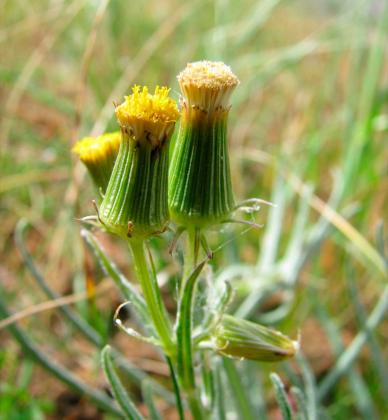A range of teacher professional learning programs will be developed to accompany the Biodiversity of the Western Volcanic Plains online outreach...




Large-headed Fireweed
Senecio macrocarpus
Long-lived perennial. Can stay green all year round, or die off in dry seasons and re-sprout from a rootstock. Threats include grazing by rabbits and livestock, as well as changes to fire patterns.
| Details | Description |
| Type | Herb |
| Group | Daisy |
| Other Common Names | Large-fruit Fireweed |
| Identifying Characteristics | |
| Distinctive Features | Leaves crowded towards the base of the plant. Leaves appear grey, covered with cobweb-like hairs, especially underneath. |
| Life Form Group | Herb |
| Life Form Codes | Medium Herb (MH) |
| EVC types | EVC 132_61: Heavier-soils Plains Grassland |
| Native Status | Native to Australia |
| Taxonomy | |
| Phylum | Charophyta |
| Class | Equisetopsida |
| Order | Asterales |
| Family | Asteraceae |
| Genus | Senecio |
| Species | macrocarpus |

Distribution maps indicate current and historic locations where species have been sighted.
Source: Atlas of Living Australia
| Endangered Status | |
| DEPI Advisory List | Endangered |
| FFG Act | Listed as threatened |
| EPBC Act | Vulnerable |
| FFG Action Statement |
The conservation status of species is listed within Victoria and Australia.
The Department of Environment and Primary Industry (DEPI) Advisory List consists of non-statutory advisory lists of rare or threatened flora and fauna within Victoria.
The Flora and Fauna Guarantee Act 1988 (FFG Act) lists threatened species in Victoria. Under the Act, an Action Statement is produced for each listed species.
The Environment Protection and Biodiversity Conservation Act 1999 (EPBC Act) is the Australian Government’s key piece of environmental legislation, listing nationally threatened native species and ecological communities.



